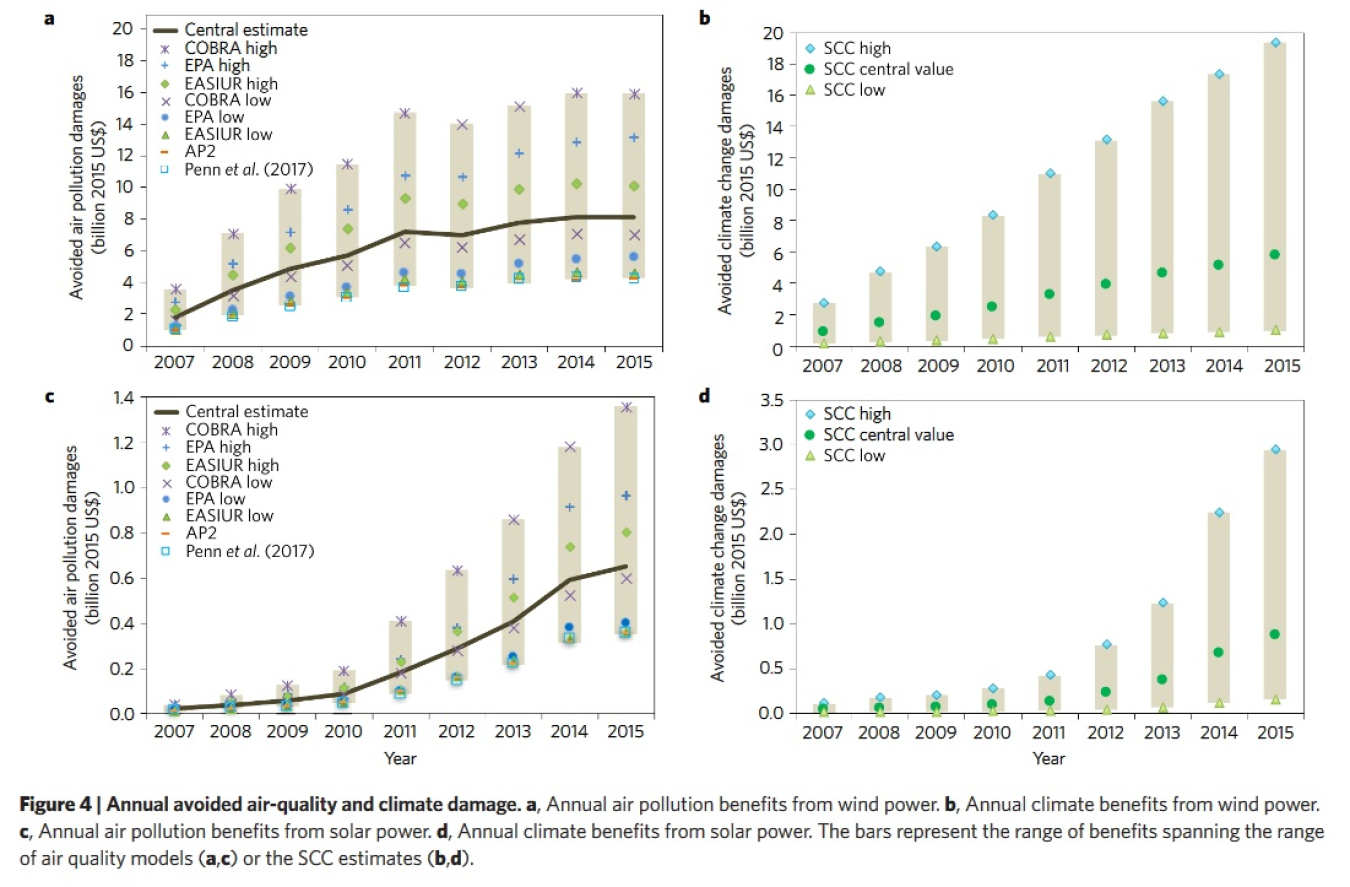Wind & solar energy provide air-quality, public health, and emission benefits as they reduce the reliance on combustion-based electricity generation.
September 25, 2017Wind and solar energy provide air-quality, public health, and greenhouse gas emission benefits as they reduce reliance on combustion-based electricity generation. In the United States, these benefits vary dramatically by region and over time. In the last decade, wind and solar deployment has increased more rapidly than any other non-combustion-based electricity-generating technology; at the same time, regulatory changes and fossil fuel price changes have led to steep cuts in overall power-sector emissions of criteria air pollutants and CO2. These changes prompt the question: have wind and solar energy benefits changed over time?
This journal article, from research at Lawrence Berkeley National Laboratory funded by the Energy Department’s Office of Energy Efficiency and Renewable Energy (Wind Energy Technologies Office, Solar Energy Technologies Office, and Strategic Priorities and Impact Analysis Team in the Office of Strategic Programs), evaluates how the climate and air-quality benefits of wind and solar evolved during the period of 2007 to 2015. The researchers found cumulative wind and solar air-quality benefits of 2015 US$29.7–$112.8 billion (mostly from 3,000 to 12,700 avoided premature mortalities), and cumulative climate benefits of 2015 US$5.3–$106.8 billion. The ranges span results across a suite of air-quality and health impact models and social cost of carbon estimates.
Journal Article in Nature Energy
(Volume 2, Article 17134; Published 14 August 2017)


